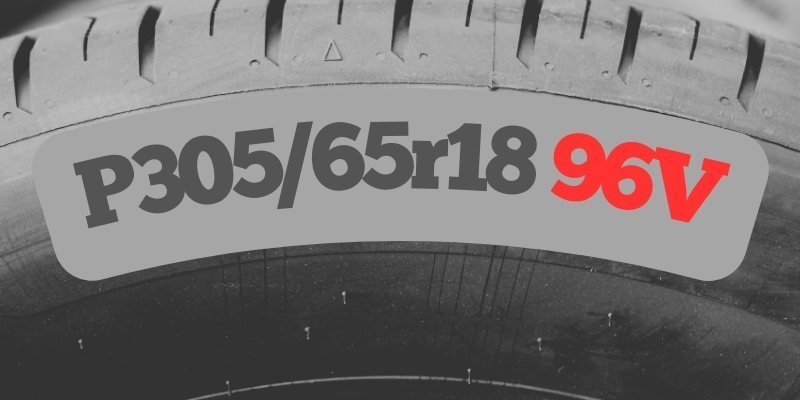What Does 96V Mean on a Tire?

The “96V” on your tire is the load index and speed rating. The load index of 96 means the tire can support 1,565 pounds (710 kg) at maximum air pressure. The V speed rating indicates the tire is safe at speeds up to 149 mph (240 km/h).
Understanding Load Index
Load index is a number that corresponds to the maximum weight a tire can carry when properly inflated. It’s like figuring out how many groceries your car can hold. Just like you wouldn’t want to overload your shopping cart and risk a wheel falling off, you don’t want to exceed your tires’ load capacity. That could lead to a dangerous blowout!
Common passenger car tire load indexes range from 75-105. The higher the number, the greater the load the tire can handle. A tire with a load index of 96 falls in the middle of this range. It’s suitable for many popular sedans and crossovers.
To find the exact load capacity in pounds for a 96 load index tire, reference a load index chart. As a shortcut, just add a zero to the end – so a load index of 96 supports about 960 x 10 = 9600 pounds across all four tires, or 2400 pounds per tire when your car is fully loaded. Always confirm using the actual chart though.
Decoding Speed Ratings
The letter after the load index indicates the speed rating – the maximum speed the tire can safely handle. A “V” rating means the tire is good for speeds up to 149 mph (240 km/h).
Here’s a quick guide to the most common speed ratings:
- S: up to 112 mph
- T: up to 118 mph
- H: up to 130 mph
- V: up to 149 mph
- W: up to 168 mph
- Y: up to 186 mph
While it may seem fun to get a tire with the highest speed rating, there’s no point paying more for a Y-rated tire if you drive a minivan and never go above 80 mph. Match the speed rating to your driving habits and vehicle capabilities.
Safety & Performance
Choosing tires with the proper load index and speed rating for your vehicle is crucial for safety and performance. Overloading your tires or exceeding their speed rating could cause overheating, rapid wear, and sudden failure.
Consult your owner’s manual or tire information placard to determine the right specifications for your car. Once you have the right tires, check the air pressure regularly with a good tire gauge.
Proper inflation helps your tires wear evenly, handle predictably, and achieve good fuel efficiency. Rotate and balance your tires on schedule too. With a little care, a set of quality 96V tires will deliver many miles of confident driving.
The Bottom Line
So in summary, if you see 96V on your tire sidewall, you now know it means your tire has a load index of 96 (1565 pound max load) and a V speed rating (149 mph max speed).
Picking tires with the right specs for your car and driving style will help keep you rolling along safely and comfortably for the long haul. Happy trails!

Meet Caitlin McCormack, a Tire Size Expert and Blogger Passionate About Everything Related to Tires. With Years of Experience in the Tire Industry, Caitlin Has Become an Expert in Tire Sizes and Their Impact on Vehicle Performance.
